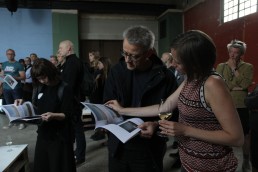Features
Copenhagen Photo Festival
June 6th-16th 2019
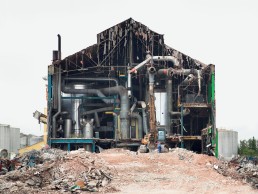
For all photography, fine art and spectacular public cultural event aficionados, the time has come once more for the annual Copenhagen Photo Festival to furnish us with a 10 day, all-encompassing, fully immersive photography experience. Opening tomorrow, the festival is a celebratory fiesta of both documentary and fine art photography, consisting of work by over 250 photographers from all over the World. Celebrating its tenth anniversary, it has become one of Europe’s leading festivals of national and international contemporary photography. It anticipates attendances of over 55,000, if last year’s numbers are anything to go by.
There are 2 main components to the Festival, the curated Festival centre located on Refshaleøen, which consists of several exhibitions on site there (including the centrepiece Censored Exhibition), and 45 off-site exhibitions, consisting of exhibitions with partner organisations, including industry-leading modern and contemporary art galleries, museums, as well as independent and impromptu exhibition spaces in cafes, libraries and even private apartments – dotted all across the city and capital region and into Southern Sweden.
The Censored Exhibition has been part of the program since 2012. The exhibition, which anchors the festival centre, is a group show that presents works chosen by a jury based on an open call. The jury consists of a curator, a critic, an artist, and a representative of the Festival. This year the jury consists of Claire Gould, curator at HAM – Helsinki Art Museum, Elisa Medde, managing editor at Foam Magazine, and Balder Olrik, visual artist and art critic. The works chosen for The Censored Exhibition all fall in the genre of fine art photography, with works needing to have been created within the last 3 years to be considered for inclusion. On the last day of the festival, selected works from the exhibition will be up for auction in collaboration with the renowned auction house Bruun Rasmussen Auctioneers. The idea behind the auction is to give both established and emerging collectors the opportunity to acquire international photography hand-picked by an expert jury at reasonable prices.
Premised upon the themes of ‘Framing Identity, Framing Society and Framing Vision’, the Festival’s stated missions are manifold, but chiefly among them to promote photography as an important mode of expression, to break down hitherto perceived divides between documentary and fine art modes of the medium, and to highlight the inclusive environment of Copenhagen and its adeptness at hosting world-class events of this nature.
During the whole festival period, visitors can also participate in guided tours, workshops and screenings. Full information can be found on the Festival’s excellent and informative website, the link for which can be found at the end of this article.
As this year’s festival preparations were underway, Artland met with three key participants to learn more about the complexities of the Festival, and more specifically, The Censored Exhibition, from key insider perspectives.
Copenhagen Photo Festival:
Festival Director, Maja Dyrehauge Gregersen
Festival Director, Maja Dyrehauge Gregersen
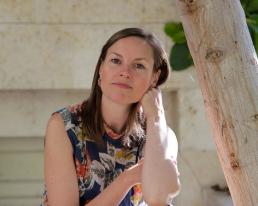
We sat down with Maja Dyrehauge Gregersen, Copenhagen Photo Festival’s Managing Director, and one of its co-founders, to ask her about the mission and future vision for the festival.
How would you describe the mission behind the festival? How has it changed, grown and developed?
Copenhagen Photo Festival’s vision is to strengthen our ability to consider photography as a form of expression. This is realised through our mission, which is to create a year-round platform, which curates, debates, engages and informs. Copenhagen Photo Festival is not strictly an art festival but seeks to build bridges between fine art photography and documentary photography. In 2018 we introduced the programme pillars Framing Identity, Framing Society and Framing Vision. These pillars work with universal themes, such as individuality, society and media, instead of photographic genres – and we hope that these might inspire our visitors to explore our programme and see the unexpected. Building bridges also comes down to our strong collaboration with institutions – from newspapers to museums and galleries. They make it possible for us to present a diverse programme.
The festival celebrates its 10-year anniversary this year. We are very proud of the festival’s development this past decade and humbled by the continuous and growing interest from both photographers, institutions as well as the people of Copenhagen. The interest in especially our open calls has gone up, and we are pleased to be able to work as a platform for younger talents, who exhibit in our festival centre. Every year more than 250 photographers are part of the festival programme, and we present more than 50 exhibitions all over Copenhagen – which means that we are the largest photo festival in Scandinavia today.
It is our ambition to be among the five most important photo festivals in Europe in 2020. This will be achieved through bringing the international photography and art scene to Copenhagen – benefitting all aspects of the Danish network in the photography and cultural fields. We also believe, that this ambition should be achieved in collaboration with exhibition partners, who also all believe in the international potential of Copenhagen.
"We are pleased to be able to work as a platform for younger talents, who exhibit in our festival center. Every year more than 250 photographers are part of the festival programme, and we present more than 50 exhibitions all over Copenhagen - which means that we are the largest photo festival in Scandinavia today."
Tell us about the idea behind The Censored Exhibition, and what does the title mean and seek to convey?
Censored exhibitions are a genre of exhibitions known all the way back from the Salon de Paris (and later Salon d’Automne). These exhibitions are characterised by a jury selecting the works exhibited. And like the Salon’s initial focus, the aim of the festival’s censored exhibition is to show the newest within the genre of fine art photography. This year’s jury consisted of Claire Gould, curator at HAM – Helsinki Art Museum, Elisa Medde, managing editor at Foam Magazine, and Balder Olrik, visual artist and art critic.
This year, all of the works exhibited are from within the past three years, giving a unique insight into the tendencies of today. But what is also important for us is to show the width of the genre, from the highly conceptual to the highly technical.
How is the selection made for the auction component, and describe how the festival embraces both a kind of institutional display and a commercial auction?
The selection is made together with Bruun Rasmussen Auctioneers, and it comes down to being able to offer the visual artists a fair valuation that is also in compliance with the current market. During the exhibition, visitors can bid on the works online, and on the last day of the festival, the exhibition culminates in an exciting live auction event in the festival centre.
The exhibition seeks to embrace both institutional display and a commercial auction by presenting great variety within the genre of contemporary fine art photography in both contexts. Our hope is to both inspire and to draw in younger collectors by working with and showing an image repertoire that is characteristic of our time.
Copenhagen Photo Festival:
Juror, Artist and Critic, Balder Olrik
Juror, Artist furthermore Critic, Balder Olrik

Purchasing a piece of fine art used to be something for the select few. But at Copenhagen Photo Festival, the majority of The Censored Exhibition — a presentation of fine art photography from all over the world — will go on auction on the last day of the festival. This year’s works have been selected by a jury consisting of visual artist Balder Olrik, Claire Gould (curator at HAM – Helsinki Art Museum) and Elisa Medde (Managing editor at Foam Magazine). We spoke with Balder Olrik, who was also a judge last year and a board member of the Copenhagen Photo Festival to talk about this year’s Censored Exhibition in advance of the event.
Could you start by telling us about your experience being a judge at The Censored Exhibition last year?
We saw a lot of really interesting photographers last year. It was key for me to get a lot of international applicants so the festival could become truly global in scope. I wanted a more diverse pool of photographers and thus wider perspectives presented. My perception is based on my experiences, so being conscious about maintaining a curiosity about a different viewpoint – despite age, nationality, gender and ethnicity – was key for me and the jury as a whole.
How has being an artist yourself influenced the way you judge a photograph?
Given I started out in painting and only moved to photography late in my career, I’m mindful that talent doesn’t have a set age range. You don’t have to be young to be an emerging artist — you can be emerging at a lot of different times in your life. These days, people have many phases throughout their lives. The idea of a person doing the same thing from 17 until they are 70 is not accurate anymore. Perhaps due to my mixed media background, if you will, I’m very open to the idea that talent can look very different and that it can come from surprising places. It’s a bit like dating. If you put people into categories of height, weight, hair colour and things like that, you end up with something that’s not very interesting. You have to be open to the idea that something special can come from everywhere.
How did you first get involved in the Copenhagen Photo Festival?
Up until last year, the Copenhagen Photo Festival was a very Denmark-dominated event, both in terms of the judges and the entrants. But it had a solid reputation as a place for high-level photography. And given Denmark’s long aesthetic history, its story is nestled within something bigger than just the medium of photography. My vision is a festival that paves the way for amazing talent, and a place that dares to showcase their bets on who’s the next shooting star. Projecting talent isn’t always pretty, and we are bound to make some mistakes, but I think Copenhagen Photo Festival can be the place for global talent scouting in the coming years, as fine art photography truly takes off. And again, given the Danish sensibility for visual qualities, not to mention that the city of Copenhagen has become a destination for culturally-engaged travellers, I think the Copenhagen Photo Festival will only continue to grow.
"Projecting talent isn’t always pretty, and we are bound to make some mistakes, but I think Copenhagen Photo Festival can be the place for global talent scouting in the coming years".
What opportunities are you hoping the Copenhagen Photo Festival will open up for the photographers who exhibit?
For the artists, I want it to be a community — a professional “home” for the artists that they want to visit every year, and this is something I think Artland may be able to help with. For example, we made an Instagram for participating photographers last year and it worked really well. When people come from everywhere, especially somewhere far away, like South Korea, for example, it can be easy to feel lonely — my works are hanging here but I’m walking alone in Copenhagen. So it’s been a part of my goal this year to build up the community and possibly invite the photographers from last year as executive guests so that the festival becomes a community where you keep up with the relationships that you’ve made over the years.
We also had a really fantastic dinner during the festival last year. The festival takes place in June when the sun goes down quite late in Copenhagen and rises fairly early. The dinner took place on a fantastic summer evening in a private garden in the eastern part of town. When these photographers saw the light coming, they disappeared into the early light of Copenhagen. Some even forgot their plane the next day. It was a great experience because we had a really nice and informal dinner together, where many relationships were formed before people explored the light and the city together in an almost euphoric haze. It is a part of my ambition to create more events like that, with a view to making the festival a networking opportunity for people. Another ambition is a commercial one. I’d like to drive more collectors to the auction that we have at the end of the festival. Getting more collectors into the quality and the collectability of fine arts photography is slowly happening, and I think we’ll soon see an exponential increase in pricing as more and more people see the value of the art form. This might be one of the last auctions at the Copenhagen Photography Festival where it’s possible to get an amazing piece of art for as little as 2,000 DKK.
Could you tell us a little more about the auction?
The auction has been a bit of a “hidden gem.” After the festival last year, a lot of people came to me and said that they would have liked to be there, but they just didn’t know it was happening. One of the things we’d like to do better this year is to involve all the potential collectors, because photography is much more fair-priced than other forms of art, by which I mean being able to buy great photography on a regular budget. There’s a real opportunity to be involved in the art market, even on a regular salary. At the festival last year, there were great works that went for less than 1000 DKK. I actually bought 9 pictures myself.
That’s something we definitely try to highlight at Artland. Not everyone gets a chance to see a picture of the community and the many hats people wear. I mean you yourself are a photographer, a collector, as well as a community maker.
We are still pioneers, even though the festival started 10 years ago, and I guess it’s the same as in a young company like Artland. You have to have many hats on to make things happens. But I can only recommend that you get involved, if you have the passion for contemporary photography.
How has photography changed since you started then?
The media has evolved. Photography has shifted from documentation and capturing “reality,” to being a means of expression. Instagram and social media have raised people’s awareness and understanding of photos. If you paint, you also become more aware of how difficult it is to paint. When you take photographs, at some point you also realize it’s not that easy to make a really compelling photograph. You may learn to do clichéd photos, but you also learn to decode that cliché. I also think that the viewer has become better at reading a photo. So in that sense, I think the whole field is very interesting.
Photography has indeed changed so much. Are there things that younger photographers have access to now that you didn’t have when you started out?
It has become easier to be an independent artist these days, to have a showroom for your work and connect with your audience. In earlier days, it was essential to have your gallery; you simply could not live without a gallery. Today I see more and more examples of self-represented artists who do very well because of their own online channels. Of course, the world may now favour artists that work well with social media and people who are good at communicating, but looking back, it seems like even the important galleries depended a lot on their artists to do just that even before Instagram. People like Olafur Eliasson and Picasso are/were great communicators. These things also mattered twenty years ago, but the gatekeepers to the art world were fewer at that time. So all in all I would say that the artists, the medium, and the audience have evolved positively.

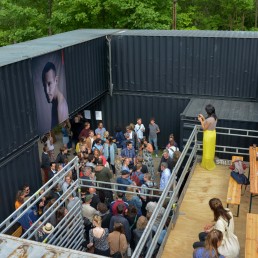
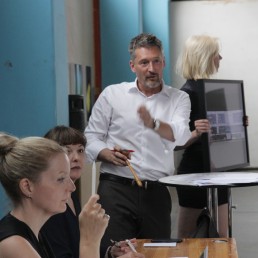
Could you tell us more about the pieces you bought during the auction?
I bought Nine Sad Houses from an Italian artist, Vincenzo Pagliuca, which was a series of photographs he had made of houses from a rural area. This is a significant issue for Southern Europe right now. Many places are now ruins, more or less ghost towns because of urban migration. Some of the houses are probably still in use, but they still seemed lonely to me. It was poetic.
What were other pieces you would have liked to have from the Copenhagen Photo Festival last year?
There were so many works that I could have bought at the auction, and it simply came down to a matter of space, since I have a modern house with few walls. There were some from a woman called Michaela Maier (DE). Her photographs were taken during a storm in Israel, but she managed to photograph the storm in a way so that it was not a story about a storm, but a story about the emotional state of your life during turbulent change. They almost made me cry. I later found out that she had broken up with her boyfriend around the same time, after having gone to Israel for him. It really makes sense when you see the pictures. They have this emotional quality to them. It’s not just that things were destroyed by the storm, but in the way the leaves were rushing you could see the powerful energy of the storm. These photographs of the storm were combined with some pictures of just her legs in a hotel bath. They made sense together on an emotional level.
There was also this Korean photographer, Hyejeong Yoo (DE/KR), who was 19 and the youngest one there. She showed some very touching pictures of Korean girls waking up in the morning. You see them sitting there in the morning, exhausted before the day has even begun, and then there would be a picture of an empty bed. We chose two sets of photographs out of all her works. For me, these photographs tell a story about Korean efficiency. I know that Korea is known for being a service-minded, efficient society. To see this very first glimpse of the day, to see these people who just look like they need to sleep a little bit more to get out of the door. It’s so up and out. Of course it’s only in my imagination that I can see them working in the shops, laughing, smiling, working late hours.
Then there was a young guy called Dan Frisk Peterson (DK), who has become fairly successful. The Copenhagen Photo Festival last year was his first small breakthrough I think. He made some really masculine photographs about machinery and security equipment, but they were all filled with both fascination and fear. I’ve met him and he looks like a soft and sweet guy, but I think he was fascinated by what it is that we go through as we grow up and just a really good sense of composition. There was also something that I really empathised with in the work, which is the sense of a good picture. You can have the sense of a good picture as a painter or as a photographer, but there is this indefinable thing of whether you understand pictures. I think someone like Dan Peterson and Michaela Maier, if either of them had done paintings, they would have done great paintings. It’s a visual understanding that makes me happy when I see it in a field of hundreds and hundreds of artists. These photographs just have this indefinable thing about them, that something which makes it worth everything.
Copenhagen Photo Festival:
Auction House Expert, Christine Almlund
Auction House Expert, Christine Almlund

Christine Almlund is an expert in photography and one of the specialists in that department at Bruun Rasmussen Auctioneers. She has been responsible for developing, cataloguing, and selling many auctions in the medium, and for the past four years has taken the lead in adding a selection of photographs from The Censored Exhibition at the Copenhagen Photo Festival to the illustrious roster of auctions at the venerable auction house. We asked her about her role and about the synergy between the festival and the auction house, how it developed and how she sees it shaping up in years to come.
Hi Christine, tell us about the auction and how the relationship between a public cultural event like the Copenhagen Photo Festival and a privately held institution like Bruun Rasmussen Auctioneers works.
This year will be the fourth time we arrange an auction event in connection with Copenhagen Photo Festival. And our experience from the past years is that the interest in investing in photographic art by young, upcoming talents has increased from year to year – which is also a parallel to what we see at our auctions in general. More people fancy photography and especially people under 45.
You see photography collecting as a medium that is gaining in interest, and also especially in a younger demographic of collector?
For Bruun Rasmussen photography is a relatively new area. We have only focused on it as an independent category since 2014. It is a “young” art form that holds a lot of potential, not least internationally and that is also the reason we now invest resources in this area. In this respect it was natural for us to initiate a collaboration with the Copenhagen Photo Festival about a Festival Auction.
I can see that a festival like this, with 55,000 visitors is ideal to make a collaboration with, especially if you’re developing your auction portfolio to include more photography sales in the future. It has a lot of potential. What would you like to achieve developmentally with this kind of strategic partnership?
The goal of the auction – and our collaboration with the festival – is to support new and forward-looking photo art and provide new collectors with the opportunity to start an art collection of high quality at favourable prices. The festival auction differs from our regular Live Auctions and Online Auctions in the sense that we focus entirely on emerging talents and present them for both the young audience at the festival and for our established collectors and customers. At our regular auctions we mostly present works by established artists with a long record of exhibitions and sales.
Yes, it’s a good idea. Bruun Rasmussen of course has a well established reputation and gravitas amongst collectors. It is good for the festival to have its participating emerging artists ‘endorsed’ in this way, and good for the artists themselves to have a chance to develop a public auction record which can help to set a market for their work. It’s a good relationship I’m sure.
Yes, with this type of auction, we hope that a lot of people will support the event, so we can help spread awareness of photo art in general and the emerging international talents in particular. Many of the photographers who have previously been part of the Censored Exhibition are today well-known, and both the exhibition and auction help promote the photographs to an international, dedicated audience, critics and curators.
